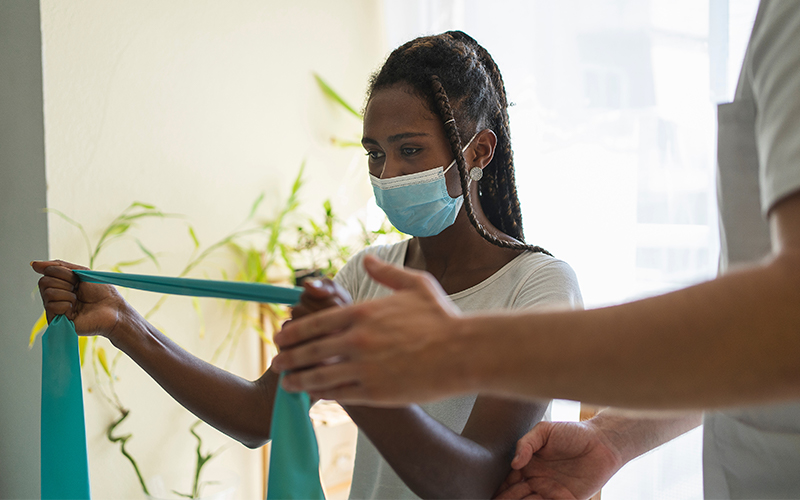
by Kristin Moore, MOT, OTR/L, Neuro Occupational Therapist II, Valley Medical Center’s Rehabilitation Services
After stroke or traumatic brain injury, you might have weakness on one side of the body, called hemiparesis. This weakness makes it hard to move, control your body, and do daily tasks like dressing or cooking. Over time, as the brain reconnects to your body, your muscles get stronger and more active, which can lead to another problem—muscle spasms, or spasticity.
What is spasticity, when does it happen and how does it feel?
Spasticity is a type of muscle spasm caused by brain injury. When the connection between your brain and muscles is damaged, your muscles may tighten up abnormally. These tightening contractions cannot be controlled and may happen even when your body is at rest. Spasticity is often a tough part of recovery. In more severe cases, it may become hard to open your hand, straighten your elbow, or reach away from your body.
Spasticity may make your muscles feel:
- Tight and pulling, like a cramp
- Shaky
- Slow
- Painful
Where to get help
Occupational therapy can help treat spasticity and improve your how your body functions in your daily life. Valley’s occupational therapists specialize in treating neurological disorders, including stroke and traumatic brain injury, which can cause weakness on one side of the body and muscle spasms (hemiparesis and spasticity).
How can working with an occupational therapist help?
- A therapist will see how your body moves. They will review your hemiparesis, weakness, and spasticity. They will ask about what daily activities are difficult to do, such as putting on your jacket or washing your hair in the shower.
- Through a combination of stretching, strengthening and movement training, occupational therapists can help lower your pain and improve your function.
- Sometimes, medication can help improve your spasticity. Occupational therapists work closely with neurologists to find the best plan for you. This may include a muscle relaxer medication or Botox injections, which make your muscles relax enough to stretch and move more easily.
- Occupational therapy can make a big improvement in your pain and spasticity. You may be able to do daily tasks by yourself again, such as push your arm through a jacket sleeve or carry a cup of coffee.
If you or a loved one experience pain, weakness, or spasticity after your brain injury, ask your doctor about occupational therapy or learn more at valleymed.org/rehab.

